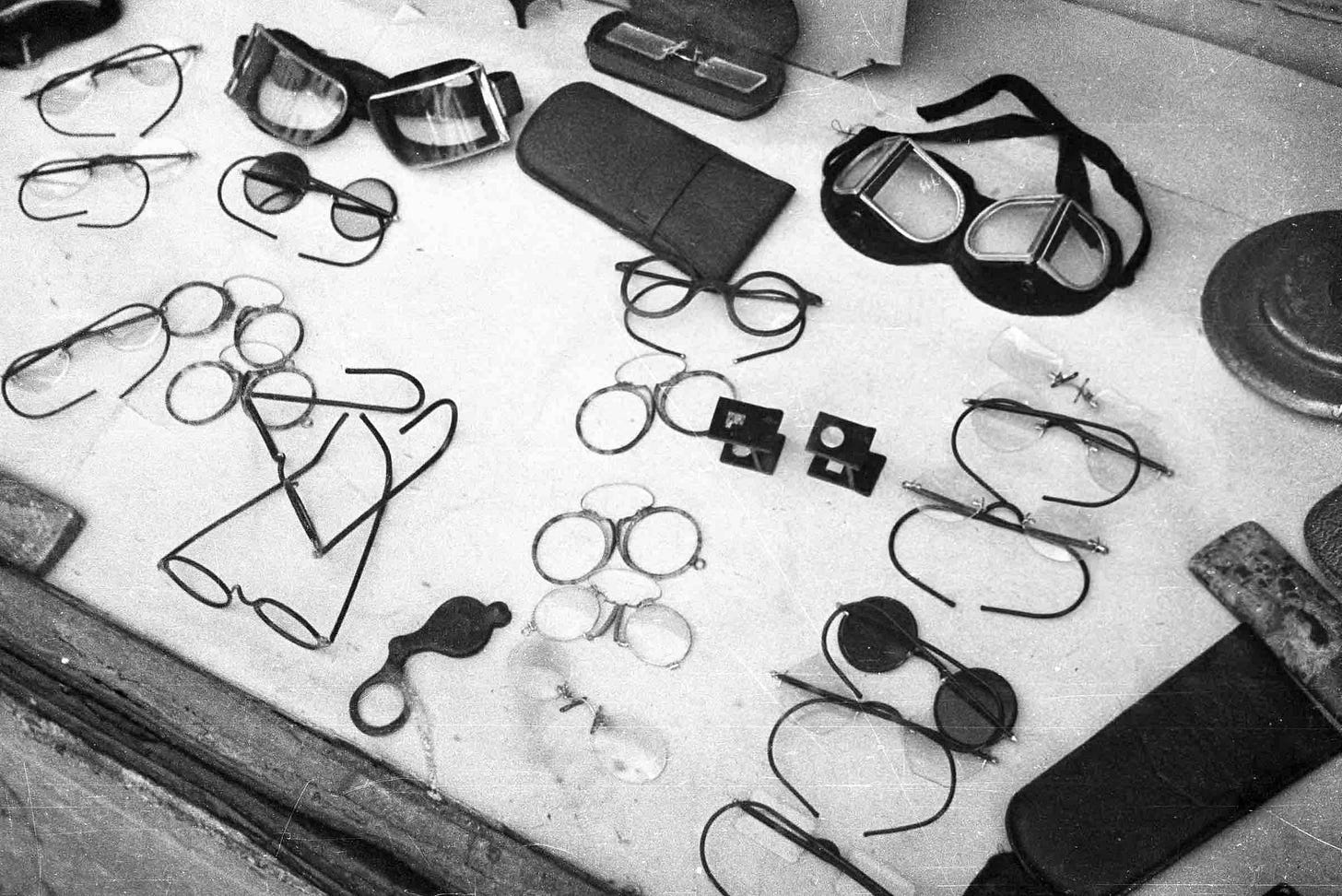Wearing glasses
The bookish person’s accessory
A few weeks ago, my daily life improved profoundly. Not because I got myself a new fancy gadget, but something that could hardly be more mundane: reading glasses. Commonplace for countless people, yet a first for me, I was finally ready for the change.
Equipped with renewed joy in reading, I began to delve into the cultural meaning of spectacles. After all, glasses have not only a functional but also a symbolic dimension. To quote Haidee Findlay-Levin1, they „are not just for seeing better, but for looking better as well.“ The more I reflected on my new experience and engaged with this remarkable invention, the clearer it became to me that the cultural significance of glasses extends far beyond attractive self-styling.
Looking better
Strictly speaking, my reading aids are not the first pair of glasses I own. I already had sunglasses. No type of spectacles better exemplifies the semiotics of this object. Among my archives, I found an old Helmut Lang ad from the 1990s; the copy succinctly delivers the promise of sunglasses: „made with the absence of decoration to promote an intellectual and fearless appearance. Seemingly effortless to maintain identity. Protected but beautiful.“ In other words, these „optical frames“ are supposed to impart an air of sophisticated coolness, for which Findlay-Levin suggests the word „spexy.“
However, not just dark-tinted but any pair of glasses can serve to communicate the wearer's (ideal) self-image through their material and shape. Unmistakably placed in the middle of the face, glasses are a statement one way or another (whoever wants to avoid this wears contact lenses or gets laser surgery).
Is your eyewear of choice appropriate for your occupation and age? Should it be more along the lines of Le Corbusier, like Maison Bonnet's unique pieces, or rather a barely noticeable wisp of nothing that costs a small fortune for that exact reason? Buying spectacles leads straight to the tyranny of choice, all the more so since the costs can be considerable: Horn or metal? Square or round? What proportions? 'Type consultation' – meaning sound judgement – is required. If proof were needed of how difficult everyday decisions can be, buying glasses provides it.
Seeing better
While it's interesting to delve into the semiotics of various eyeglass designs, the functional side is even more fascinating. That’s because the marvel of optical technology lies in its ability to enhance the daily existence of billions. Unlike so many promises of novel technology, its benefits are not only completely evident but also free of downsides. What mass-market technology can make that claim?
My reading glasses allow me to effortlessly do again what I love most and what secures my livelihood: reading and writing. I experience a renewed desire to read printed books, even in dim light. I am less tired. The number of uncorrected typos in my texts is decreasing. Everything is perfectly sharp again. The contrast to the preceding strain is so enjoyable that I almost worry about getting used to it again.
I'm familiarizing myself with my new object. For instance, I’ve noticed that my glasses fog up slightly when I drink my espresso, or that Face ID still recognizes me when I’m wearing them. I need to get used to new habits, such as remembering to take my glasses with me, putting them on and taking them off, and correctly aligning my eyes depending on the distance. In the case of cleaning them, I'd gladly do without that effort. Needless to say, the inconvenience is nothing compared to the payoff.
Sometimes, when I take my new glasses off after extensive reading, the unobstructed view of the world startles me. I now rely on these things. They are a life extension, an unexpectedly granted reprieve.
The fragility of human existence
One of the most memorable scenes in film history is from Sergei Eisenstein’s 1925 film Battleship Potemkin, depicting the Tsarist army slaughtering innocent children and women on the Odessa steps. Eisenstein captures the horror of the massacre by showing a baby carriage rolling down the steps and the close-up of a wounded, screaming woman wearing fractured glasses. The image of the broken spectacles transcends the political circumstances of its creation, remaining deeply moving a century later. A more striking symbol for the vulnerability of the civilian, the fragility of the human, is hardly conceivable.
Fantastic Man FW 2008, p. 100


